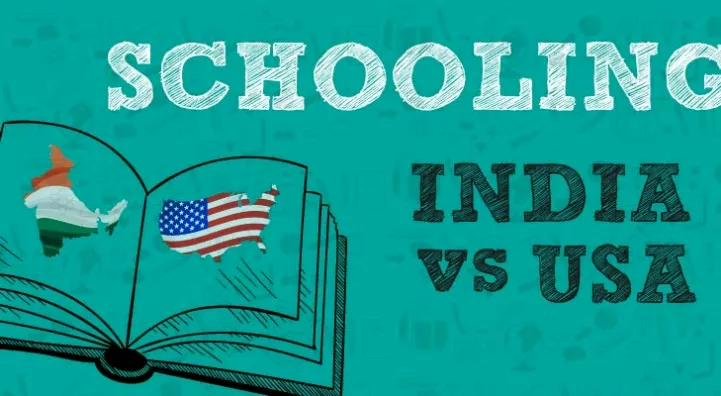How is US education different from Indian education?
American education system vs Indian education system
It is difficult to say which system is better. Both education systems have their own benefits and drawbacks. Both the systems have managed to develop the legendary personalities and world leaders. Americans who have never been to India would never be able to understand the Indian education system and vice versa. If we analyse these two education system, we will find some similarities and some differences. It’s completely upon individuals to decide which system they would like to prefer.
Before counting of difference let us take you through the basic structure of evolved educational system of both countries.
Indian Education System (10+2+3 pattern)
A decade ago it was considered that one cannot get the world class education in India. However, the current trend has shown tremendous development in quality of education. Various research done in the past decade has highlighted the loopholes in curriculum. However, governing bodies had acted upon such drawbacks and brought some necessary changes. Syllabuses have been amended, new courses are being added and teaching methodologies have been changed. Updated infrastructure and qualified teachers are proffering premier quality of content. E-learning is gradually becoming trend in the schools. Education is the responsibility of central...
It is difficult to say which system is better. Both education systems have their own benefits and drawbacks. Both the systems have managed to develop the legendary personalities and world leaders. Americans who have never been to India would never be able to understand the Indian education system and vice versa. If we analyse these two education system, we will find some similarities and some differences. It’s completely upon individuals to decide which system they would like to prefer.
Before counting of difference let us take you through the basic structure of evolved educational system of both countries.
Indian Education System (10+2+3 pattern)
A decade ago it was considered that one cannot get the world class education in India. However, the current trend has shown tremendous development in quality of education. Various research done in the past decade has highlighted the loopholes in curriculum. However, governing bodies had acted upon such drawbacks and brought some necessary changes. Syllabuses have been amended, new courses are being added and teaching methodologies have been changed. Updated infrastructure and qualified teachers are proffering premier quality of content. E-learning is gradually becoming trend in the schools. Education is the responsibility of central...



